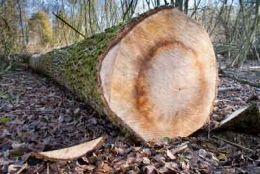Grading rules are used to determine the value of lumber. Hardwood and softwood have different grading rules based on how the wood will be used. The central purpose for grading lumber is to determine the structural integrity of the wood.
Hardwood
The National Hardwood Lumber Association set the grading standards for hardwood. Hardwoods are generally used in the production of furniture because it must be aesthetically pleasing and requires fewer defects; usually hardwood has a higher the value. Hardwood grading is not about strength, but beauty. Knots, wane, pith, shake, rot, and pinholes lower the grade and value.
Softwood
The National Institute of Standards and Technology established the American Softwood Lumber Standard PS 20-05. The most common use for softwoods like fir and pine is construction, so grading is more about strength than beauty. Knots in softwood lumber can be points of weakness and the number, size, and density of knots can render the lumber unusable.
Pro Tip:
I have found that the cost of falling, milling, drying, planing, and inspecting softwood for construction is more expensive than purchasing wood from a lumber yard or home improvement store.
On the other hand, hardwood is far more expensive and so the effort it takes to turn those logs to lumber is easily justified.
